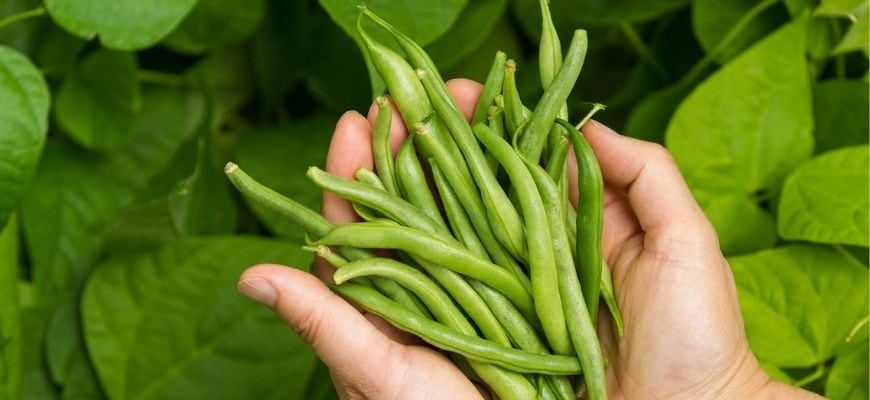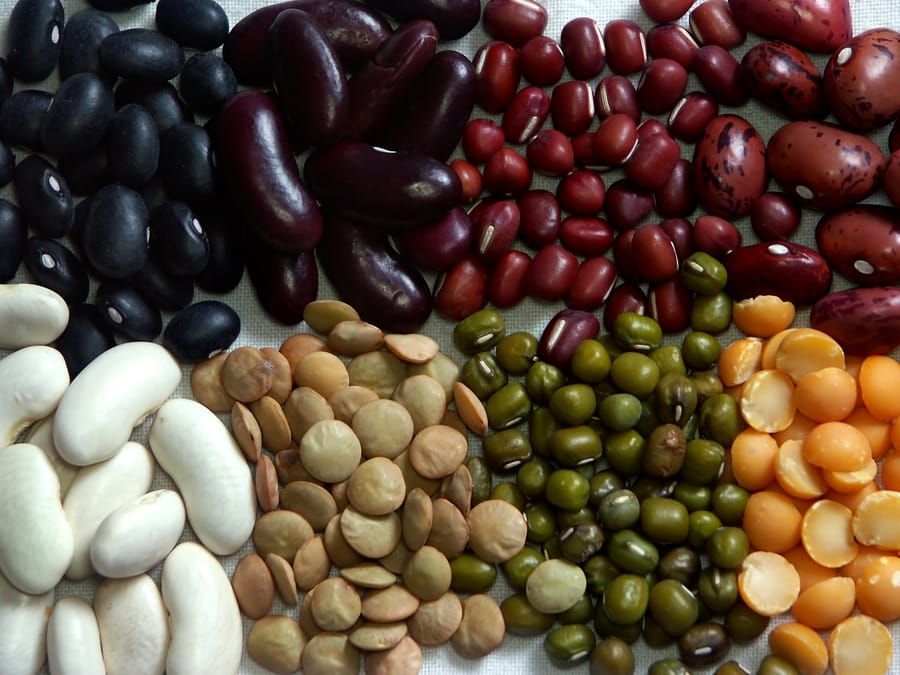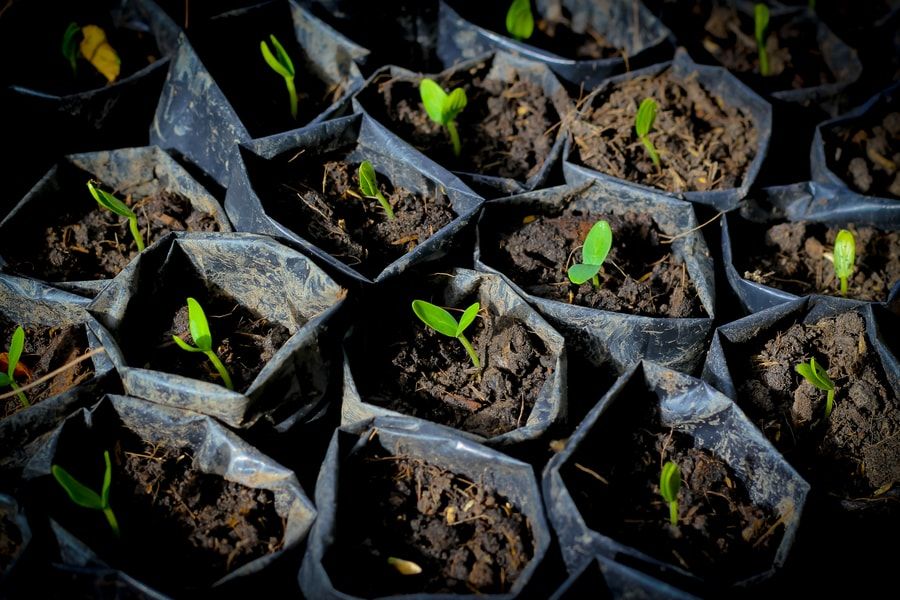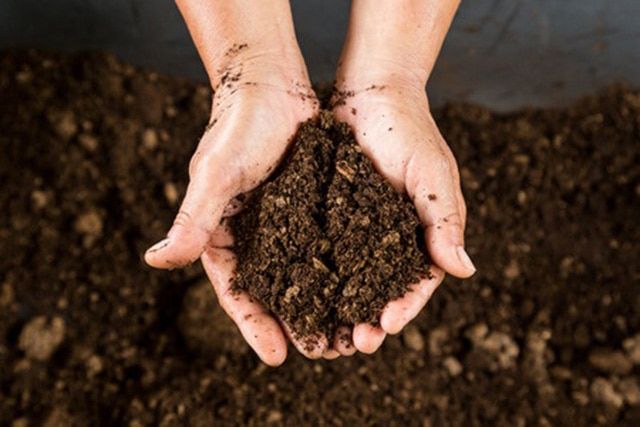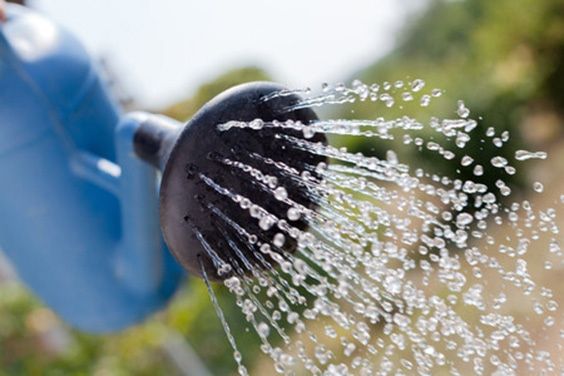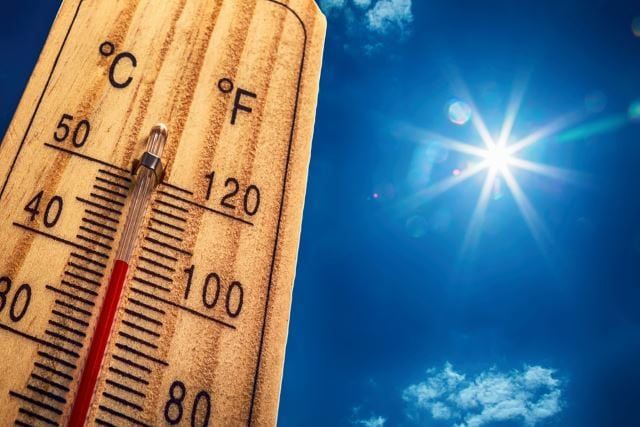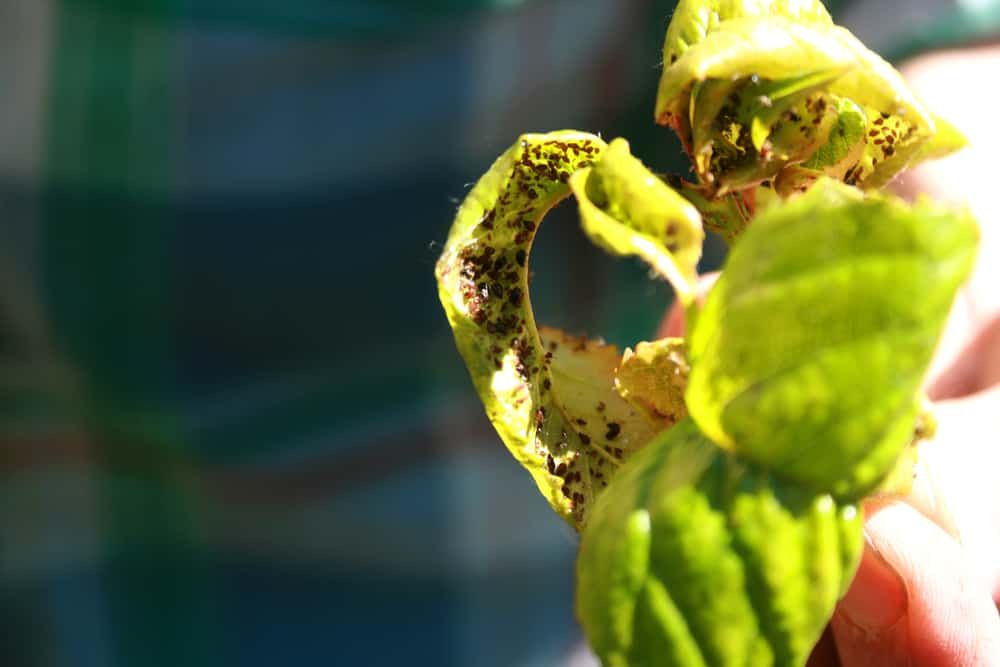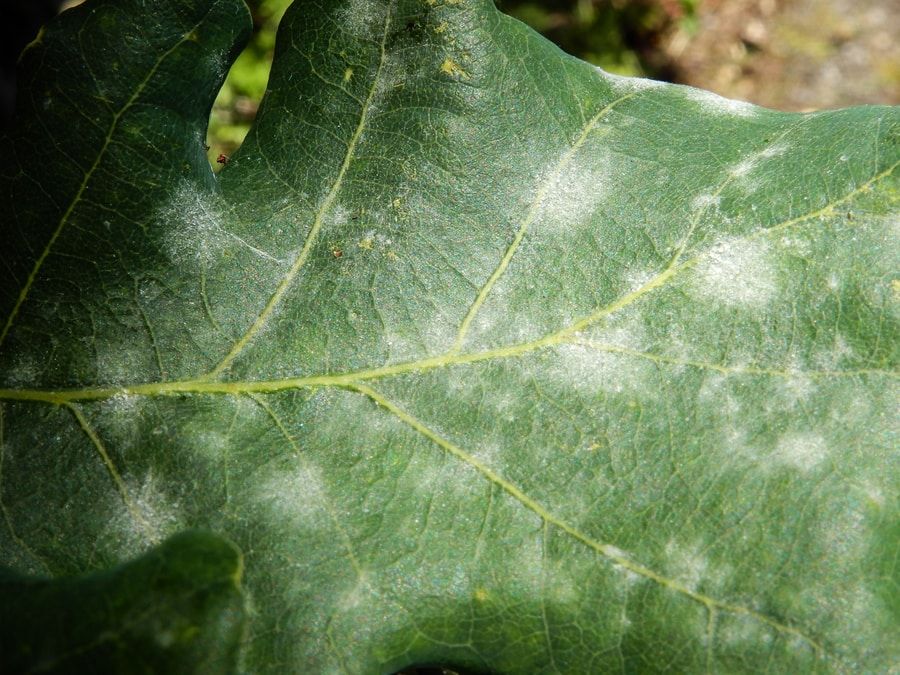Green beans are a form of the common bean and are generally the protective husks, young fruit and the unripe counterparts of the common bean. These beans are also commonly known as string beans, French beans, snap beans and now also as stringless beans.
When it comes to growing beans, there are many different types of beans that can be grown in your garden or even inside the house in a container. All kinds of beans are relatively easy to grow and can be grown with limited space as well. Hopefully, this guide for how and when to plant green beans will help you out this growing season.
Types of Beans to Grow
There are so many variations in the types of beans that you can grow in your garden or in a container. Due to their vast varieties, they can be grouped together in a lot of different ways as well. They can be segregated based on their pods and seeds (the edible parts), how they can be consumed (fresh pods, fresh seeds or dried seeds), or they can also be differentiated based on how they grow (bush or pole).
In the case of green beans, the most relevant category to segregate them by is based on how they grow. There are two different growing styles for green beans and those are bush beans or pole beans.
Bush Beans
Bush beans are quick, reliable and super easy to cultivate. Generally, the various varieties of bush beans tend to grow between 12 and 24 inches or 0.30 to 0.60 meters in height. The bushes of these plants tend to spread out across the ground as opposed to upwards.
Since they spread out horizontally, bush beans do not require any help or support while growing in the garden such as trellis to climb. This is one of the benefits of planting bush beans; you do not have to string them. However. The downside to that is that they are very hard on your back when picking them, as you must bend down.
The seeds for bush beans are sown later in the spring, this is usually done after the last frost of the season. Then the beans are harvested starting in the seventh or eighth week and generally lasts until for about three weeks.
Although bush beans generally tend to provide only one harvest per season, they are relatively easier to grow and do not require much tending. Another benefit is that they tend to produce beans about one to two weeks faster as compared to poles beans even if they do not produce as much as pole beans do.
Some of the most popular varieties of bush beans are Contendor, Bush Blue Lake, Bountiful, Provider, Tendergreen.
Pole Beans
Pole beans are easier to harvest, are faster and result in a larger yield of beans. Pole beans generally tend to grow vertically and can be runner beans or vining snap beans. They usually grow to be around eight to ten feet or 2.4 to 3 meters.
The vertical height of pole beans means that require either trellis, strings, teepees, netting, towers or other forms of support in order to grow. Although this means that they require more work in terms of tending to them, it is also beneficial when harvesting them. During the harvest pole beans are easier to harvest due to their height as you do not need to bend down to pick them.
The pole beans are also planted after the first frost and generally tend to mature faster than bush beans do. This means that they are ready sooner for harvest in comparison to bush beans. They also require much less ground space and can be easily grown in a limited amount of space.
Another advantage of pole beans in that they tend to have a longer harvest season which can last anywhere from around six to eight weeks. This means that pole beans produce a much larger yield than bush beans. Like this, another advantage of pole beans is that they grow beans continuously through the growing season, so they produce a larger number of beans per individual plant in comparison to bush beans.
As mentioned, due to their height most pole beans require some form of support for their height. You can add trellis for the pole beans to climb to help them grow, some examples of these are cattle panels, wooden lattices or another trellis that are used in gardens. Similarly, a lot of people use teepees as well to grow their pole beans on.
Some of the most popular types of pole bean varieties are Fortex, Rattlesnake, and Kentucky Wonder.
How to Grow Green Bean Plants
Plants such as beans are generally sown directly into the soil in your garden. However, they can also be transplanted into the garden as small bean plants. One of the most crucial points to remember when planting green beans is to ensure that you do not plant the seeds too early.
If the seeds are planted too soon, they will rot within the cool and damp soil. There are tips to get an early start on planting them however you still must be wary of frost that could damage the plants.
Early Planting Tip
A good method of getting an early start on planting is to place black plastic down in order to heat up the soil. This will prevent the seeds from rotting due to the cold as the black plastic warms the soil from the sunlight as well as provide cover from moisture.
Another tip is also to use inoculant. However, even after these measures, it is important to be wary of frost that can cause damage to the plants after the seeds have germinated. Check the weather and temperatures regularly prior to planting the seeds. Ensure that you know about the last frost dates for your area.
Planting the Seeds
- First, begin by adding about one to two inches of compost on top of the soil in which you plan to plant the seeds
- Before you sow the seeds make sure that if you are planting a variety that requires trellis or teepees or a fence or any other kind of support, you install those first. Trying to install these afterward can cause damage to the seedlings as well as to the plants
- If you are planting bush beans as opposed to pole beans, they begin producing beans earlier and they generally come all at once so it might be beneficial to do succession planting, every two weeks in order to ensure the beans last longer
- The seeds can be planted in single rows or in wider rows by broadcasting the seeds and ensuring there is a four to six inch spacing between the plants. The packet of seeds also come with instructions on how to sow the seeds
- If your variety is the kind that requires support, then ensure to keep a rough rate of six to eight seeds per teepee or about six inches in between the plants.
- Place the seeds roughly one inch deep, dig a shallow hole in the soil with your hand or a trowel, and then make sure to water the seeds immediately after planting them and then continue to water them regularly until the seeds germinate.
- Watering them after planting the seeds is important. However, do not over water or drench the seeds either. Provide just enough water to dampen the soil and give the seeds some encouragement to grow
- It is also important to mention that the pH level of the soil should roughly be 6.0 to 6.5. Green beans generally prefer this level of acidity.
- If you have added the correct amount of compost to the soil, then there should be no need after this to fertilize your soil any further. This is due to the fact that beans require very little nutrients. If too much nitrogen is added to their soil it can inhibit and delay their growth and production.
Growing Green Beans in a Pot
If you do not wish to sow your seeds in the ground, you can choose to plant them in a pot or container as well. You can do this to wait until they have germinated and transplant them into the garden, or you can simply grow them within the pot.
If you wish to grow them in the container or grow them inside, you will need a relatively large pot or container. The container should be about 8 inches or 20 centimeters wide, to allow the beans to grow.
You can fill the pot with loose soil that is rich in nutrients and as with planting the beans in the ground make sure that if you are planting pole beans you have the necessary support ready as well.
You can just stick the trellis or a lattice in the pot as well to help support the beans so that the plants can grow. Again, this must be done prior to sowing the seeds.
In addition to this plants that grow within pots, tend to dry out faster, this means that you should check the moisture level of your soil more regularly. The green beans may need more watering if they are potted.
Looking After the Green Beans
Trellis
If you are planting pole beans, then setting up a trellis or another form of support is necessary. It is however not required for bush beans. If you do plant a pole variety, without some form of support trellis it will greatly impact the growth and production of your beans.
One of the easiest forms of support that you can set up for your pole beans is a cattle panel. This is just a small piece of wire fencing, that is placed behind the growing area of your seeds. Make sure to set this up before planting the seeds.
You can also purchase many different types of trellises or make them yourself. They can be traditional pyramid-shaped trellises or simply a plastic or metal stake. They also need to be placed just behind the area in which you will plant the seeds. However, make sure that about four inches or roughly ten centimeters of it are underground.
Light
Pick a spot that is sunny to plant your green beans as there is a strong relation between sunlight and your beans. They require plenty of sunlight to grow so chose a spot that receives a lot of sunlight during the day. You will also get the most yield out if your plants by planting them where the sun hits them most.
This is also important as green beans so not thrive in soil that is very moist. So, you should avoid areas that are shaded. This is because shade prevents evaporation and prolongs the amount of time that soil retains its moisture for.
Although sometimes the immense heat of summer can also cause the flowing of your green beans to stop or slow down, you can add some temporary shade but generally watering them should be enough to give them relief and keep flowering. Providing your plants with a lot of sunlight will help to keep them dry and will make them less likely to be affected by diseases.
Soil
Good soil and soil that is appropriate for your type of plant is the most important in ensuring healthy and strong plants. Beans tend to prefer soil that is moderately rich in nutrients. You can easily adjust the soil to match the needs of your beans with organic matter such as compost and fertilizer.
You can adjust the soil to by missing it with compost. Do this until the mixture has a loam like texture. Green beans flourish in soil that is loamy. This means that your garden’s soil is more clay-like or is sandier, then you will need to adjust it using compost or fertilizer prior to planting your seeds.
Loamy soil is generally crumbly and has a darker color. You can test your soil by squeezing some in your palm. Loamy soil will keep its shape but fall apart when it is touched. If, however, the soil is clay like it will stay in a ball shape in your palm and if it is sandy soil, it will not retain its shape and fall apart immediately.
You can also make your soil loamy if it is not already. If your garden has heavy soil that is clay based, then you can add about two inches or roughly five centimeters of compost or manure to it. Place the compost or manure over the soil and mix it into about one foot or thirty centimeters of the top of the soil. You can do this using a shovel, a rototiller or a gardening fork. In addition to this if your soil is exceptionally heavy you can also add sawdust or sand into the mixture.
However, if you have sandy soil in your garden, you can also add in the same amounts of compost or manure but refrain from adding the sawdust. Make sure to work the compost or manure well into the sandy soil.
Finally, regardless of what type of soil you have, you should ensure that the area you are planting your green beans in is free of any kind of garbage, trash, weeds, stones, and other lawn debris.
Water
It is essential that green beans get the correct amount of water. Too little or too much watering can cause damage to the plants as well as affect the yield of beans. Generally, green beans require about 1 to 1.5 inches or roughly 2.5 to 3.8 centimeters of water in a week.
The plants should be watered daily and preferably in the mornings. This is important as water them in the middle of the day is ineffective due to evaporation. Similarly, it is important to skip watering them on cloudy or rainy days to avoid overwatering which can lead to diseases. Watering on sunny days prevents the foliage from becoming drenched.
If possible, it is also better to have an in-ground watering system or drip irrigation as opposed to water from overhead. By doing this it also prevents dirt and water from splashing onto the leaves and foliage which causes diseases.
Make sure however to keep the bean plants well water or they will stop flowering. Too much water or too little water in the later stages of growth can lead to the premature falling of the pods and flowers of the beans.
Temperature and Humidity
Although, green beans are quite tolerant of heat, they are quite sensitive to the cold especially frost. It is important to plant them after the last for in order to make sure that the maximum number of plants grow and produce beans.
Generally, the ideal temperature for green beans to grow at is when the air temperature is roughly between 65 and 85 Fahrenheit or about 18 and 29 degrees Celsius.
Fertilizer
Due to the fact that green beans are a type of vegetable, they are very much capable of regulating their nitrogen content. So, they do not absolutely require fertilizer to supplement their growth.
However, as the beans can feed themselves, the pole beans produce over a long period of time so they can benefit from some layering of compost or manure about halfway through the growing season. Since green beans have shallow roots and they do not travel too deep into the soil, the extra compost or mulching will help keep them cool and provide moisture in the heat of the summer.
You can add a 10-20-10 type fertilizer into your garden soil prior to planting your seeds. Although the green bean plants do not require a high amount of nutrients, by having a light layer of fertilizer you can help them produce a better harvest. You can use a trowel or shovel and work in the fertilizer into the top three to four inches or about 8 to ten centimeters of soil.
The benefit of using a 10-20-10 fertilizer is that it contains a higher quantity of phosphorus as compared to that of nitrogen or potassium. This meant that it is beneficial in producing a larger and stronger yield of beans. However, if there is too much nitrogen in the fertilizer this can cause your bean plants to have a lot of leaves but very few beans.
Common Problems Faced by Green Beans
There are several pests and diseases that green bean plants often run into. These pests need to be treated with organic pest control methods that include insecticides and fungicides. As well preventative measures need to be taken to ensure that your plants do not contract these pests.
Some of the most common organic fungicides are Neem oil and sulfur, these can be used to treat and prevent several fungal pests.
Green beans are generally most susceptible to white mold and mosaic viruses and they also attract a lot of mites, aphids, cutworms, Japanese beetles, and Mexican bean beetles.
One of the ways to get rid of mites and aphids is to hose them off the leaves of your plants with a water pipe.
Pests
- Stem Anthracnose
Stem Anthracnose is a type of fungus that your green bean plant can contract. The telling sign for this fungus is dark-colored spots on your plant. This occurs when your bean plants are growing in conditions that are too wet.
In order to avoid contracting this fungus, you should avoid overhead watering. Unfortunately, this is a preventative measure, as no treatment is known at the time for this. However, by using drip-irrigation or underground watering systems you can prevent the dirt from getting on to your plants and prevent the fungus from catching on to them.
- Bean Rust
Bean rust is another form of fungus that your green beans can get. The way to tell if your plants have this fungus is when they start to get rust colored spots on them. Like the stem anthracnose, you must prevent this disease from occurring as opposed to treating it. This can be done by planting your crops in rotation. However, once your plants contract this disease you will have to dispose of them.
- Mosaic Virus
Mosaic viruses are a type of disease that is caused by multiple factors. This includes things such as nutrient deficiencies, infections, or the use of herbicides. You can tell if your bean plants have this issue if you see that they have spots on them that are unusual in color. Again, like many of the diseases, the only way to get rid of this is to dispose of your plants once they have contracted this disease.
Powdery Mildew
Powdery mildew is also a fungal disease. It is essentially what it sounds like a white thin and powdery coat that spreads over your plants. It spreads through rain and wind and is often caused by damp foliage.
Harvest
In term of green beans, there is no correct time to harvest them. It can be done to your preference. Mostly they can be picked prematurely when the outside husk is soft and less stringy. These can be consumed raw or cooked. You can also wait for them to mature however those are then mostly consumed without the husk.
Conclusion
Green beans are a great garden green with numerous uses. They can be consumed raw, boiled or even fried. They are quite easy to plant and grow within your home garden or even inside your home. The key to growing them well is to ensure that they receive the proper amount of sunlight and water. Finally, by using preventative measure and looking after your plants you can save them from any pests as well. Then you can harvest them once they are to your liking.

